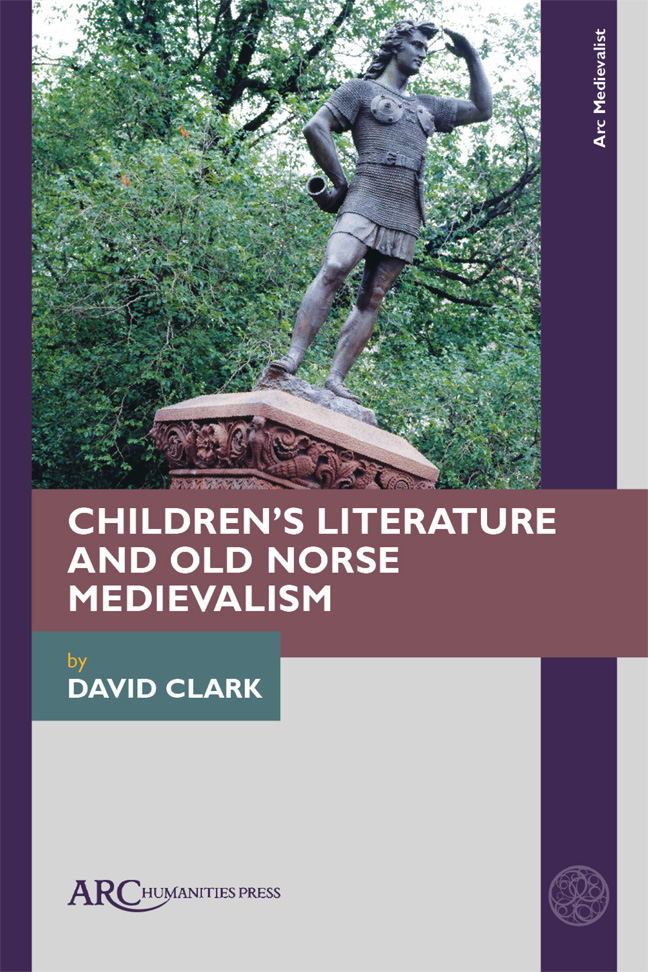Book contents
- Frontmatter
- Contents
- Acknowledgements
- Dedication
- Introduction: The End
- 1 Age-Related Categories
- 2 Generic Categories
- 3 Transformational Fantasy
- 4 Horned Helmets and Comic Anachronism
- 5 Viking Reputation
- 6 Runes and Magic
- 7 The Power of Story
- 8 Race and Ethnicity
- 9 Heroism
- 10 Viking Masculinity
- 11 Viking Femininity
- 12 Viking Sex and Gender
- 13 Bowdlerization
- 14 Sexuality
- 15 Ecological Threat
- 16 Norse Medievalism in Alan Early's Father of Lies Trilogy
- 17 Avoiding the End of Days: K. L. Armstrong and M. A. Marr's Blackwell Pages
- 18 Rick Riordan's Magnus Chase Series and Norse Medievalism
- Conclusion
- Select Bibliography of Frequently Cited Works
- Index
2 - Generic Categories
Published online by Cambridge University Press: 17 February 2024
- Frontmatter
- Contents
- Acknowledgements
- Dedication
- Introduction: The End
- 1 Age-Related Categories
- 2 Generic Categories
- 3 Transformational Fantasy
- 4 Horned Helmets and Comic Anachronism
- 5 Viking Reputation
- 6 Runes and Magic
- 7 The Power of Story
- 8 Race and Ethnicity
- 9 Heroism
- 10 Viking Masculinity
- 11 Viking Femininity
- 12 Viking Sex and Gender
- 13 Bowdlerization
- 14 Sexuality
- 15 Ecological Threat
- 16 Norse Medievalism in Alan Early's Father of Lies Trilogy
- 17 Avoiding the End of Days: K. L. Armstrong and M. A. Marr's Blackwell Pages
- 18 Rick Riordan's Magnus Chase Series and Norse Medievalism
- Conclusion
- Select Bibliography of Frequently Cited Works
- Index
Summary
GENRE, LIKE ANY other category, has its own set of problems, not least that chil-dren's literature is sometimes taken to be a genre in itself. Nonetheless, as Kimberley Reynolds points out, children's literature contains within it “all the genres and subgen-res used to classify writing.” In the discussion below I draw out some broad generic groupings such as retellings, historical, timeslip, and transformational fantasy novels.
Non-Fiction
The main emphasis in this book is on fictional narratives and how they make use of medieval history and culture. But there are, of course, many non-fiction works which seek to educate children of all ages about Norse society. Terry Deary's The Vicious Vikings (1994) in the Horrible Histories series probably still enjoys the farthest reach, and emphasizes “horror…pain and suffering,” on the principle that these are the elements children enjoy and that this is “the truth about the Vikings.” Deary's epilogue concedes that many Vikings were “good farmers, clever craftsmen and talented artists,” but insists that “the historians who say the Vikings weren't vicious are kidding themselves” (127). Deary's vision of the Middle Ages foregrounds the atrocities of war, as though the twentieth-and twenty-first centuries had not witnessed atrocities as great as or greater than any seen before this point.
More recent historical titles, such as Allan Burnett's The Vikings and All That (2016) are told in a similarly accessible style—employing cartoon illustrations, maps, mock instruction manuals, timelines, quizzes, and short summaries of myths—but place a much greater emphasis on the dual aspect of the Vikings. Burnett begins his book with a dramatized account of a Viking raid, but clarifies that it is “intended to explain a key Viking fact…when real Vikings turned up, some came in peace while others came to kill” (11). He balances the “grisly and gruesome details” which throng Deary's book with information about “the peaceful kind” of Norseman, stressing “there was much more to the Vikings than just raiding and robbery” (11). He finishes by debunking some myths about the Norse, ending with the horned helmet (92).
- Type
- Chapter
- Information
- Children's Literature and Old Norse Medievalism , pp. 27 - 38Publisher: Amsterdam University PressPrint publication year: 2023

